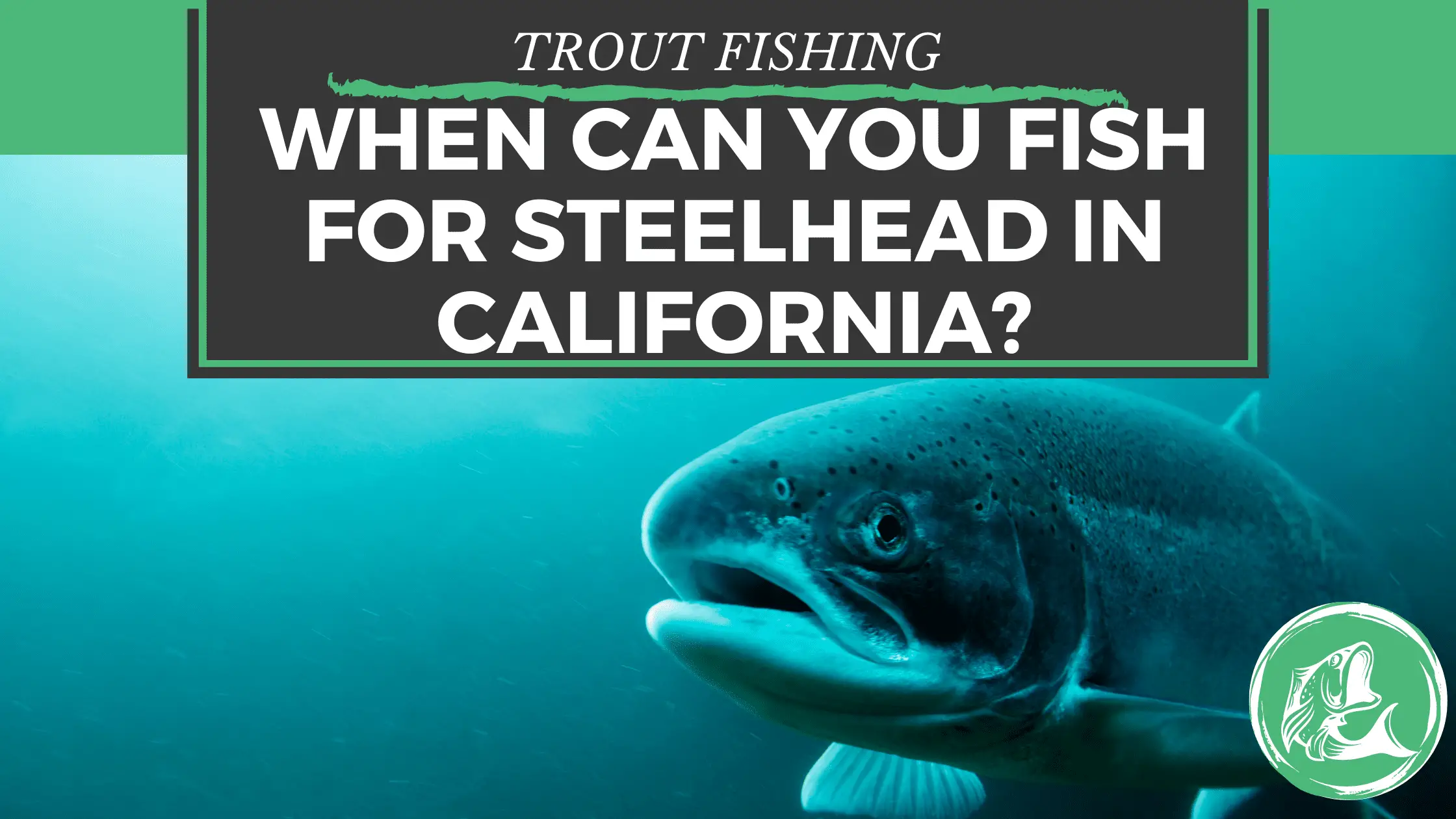California is a hotbed for trout fishing, and the steelhead is one of the best catches you’ll get! Steelheads, like all trout, are cold-water species abundant in the state’s northern half. In the farther south, you can also find smaller populations. Californian rivers that empty into the Pacific are home to some of America’s great steelhead fishing opportunities.
While the flow of steelhead in California varies, some rivers host more than one run in a season. A much larger winter-run usually follows summer-run steelheads. So, the peak of the steelhead run is usually December through February, the best time to fish for steelhead.
Several factors affect the season, including water temperature and rainfall. You must also check the forecast before heading out. The steelhead population also varies in each river, especially when they start their migration. There are also various tactics to catch steelhead and the rules that apply to fishing in California.
So learn some essential information here before you head out on the water to go steelhead fishing in California!
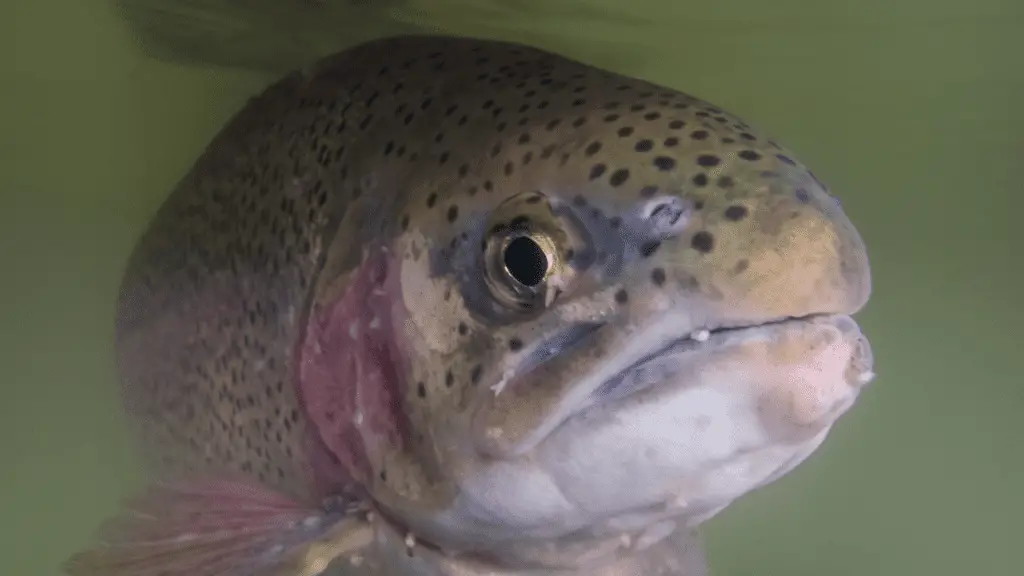
When does steelhead run in California?
As mentioned above, some Californian rivers host more than one run in a season—summer-run steelhead followed by a much larger winter run.
Steelhead fish migrate from the Pacific to smaller tributaries in the summer. They spend their time resting in stagnant pools with consistent cool temperatures, waiting for winter rains that will help them grow.
Summer steelhead in Northern California is highly selective. They are elusive predators that love to live in the deep pools of cool water, seeps, and springs. They need large boulders, woody debris, and undercut banks to provide cover from predators.
Adult summer steelhead spawns in high-quality, cool water rivers and then migrates back to the Pacific Ocean around March. Juveniles leave from April to June, where they feed and grow before migrating back to the sea.
Winter steelhead enters North California estuaries and rivers between September and March, spawning peaking between December and early April. These steelheads are sexually mature when they arrive at their spawning areas. They usually spend two years in freshwater and one year growing at sea. They will spawn until early April.
Steelhead school together in early spring to spawn, while older juveniles maintain faster water and pool habitats. The juveniles smolt and migrate to estuaries or the ocean between March and June.
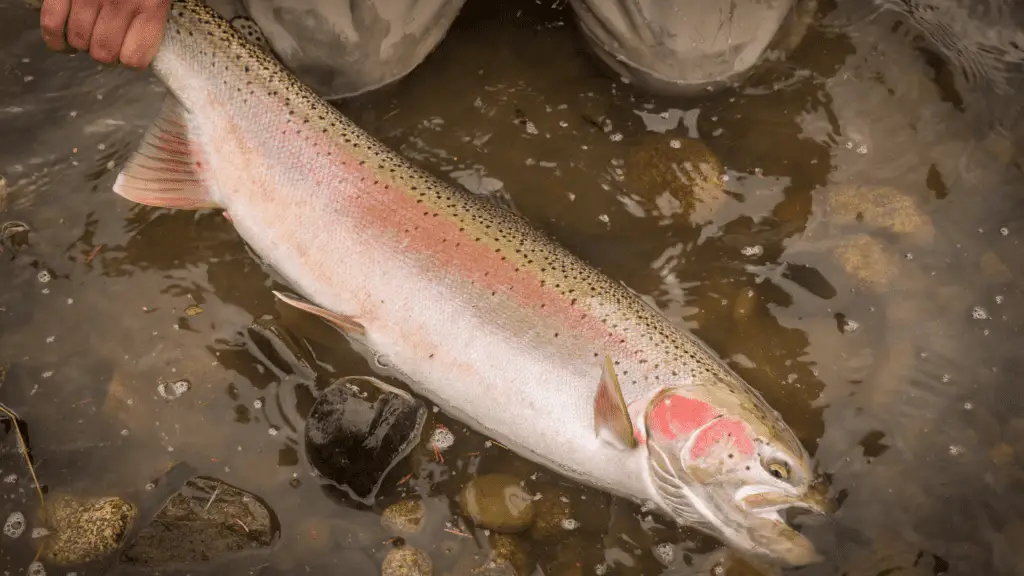
How long is the steelhead season in California?
The migratory pattern of steelheads is based on a river’s geography and watershed size. In larger watersheds such as the Mad and Eel River, freshwater entry for winter-run fish can happen as early as September or October. In smaller watersheds, it’s more likely that the fish will enter the water in December and continue into April or May.
There’s no problem with the flow or temperature of winter-run adults. However, summer-run populations do migrate primarily from April to June or July.
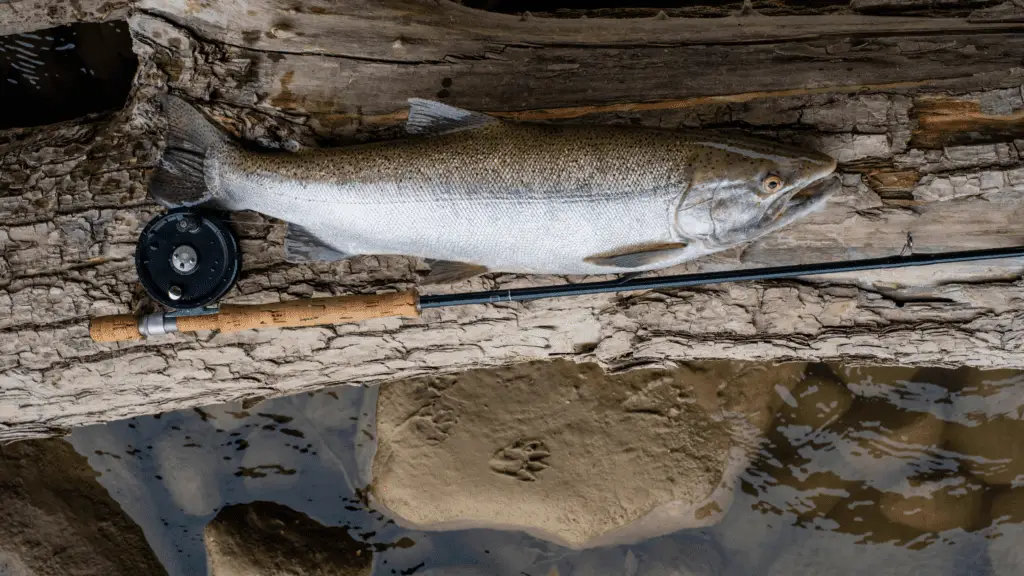
Can you keep steelhead in California?
Anglers must have a Steelhead Report Card in their possession to keep a steelhead in California rivers and their tributaries. They must also record their catch and where they found the steelhead. The card provides information about the health of the steelhead population and how it is doing so far this season. Anglers must immediately complete and return the card.
Nonetheless, remember that there are steelhead limits in California. More importantly, all wild steelhead must be released unharmed according to Califonia Department of Fish and Wildlife Regulations.
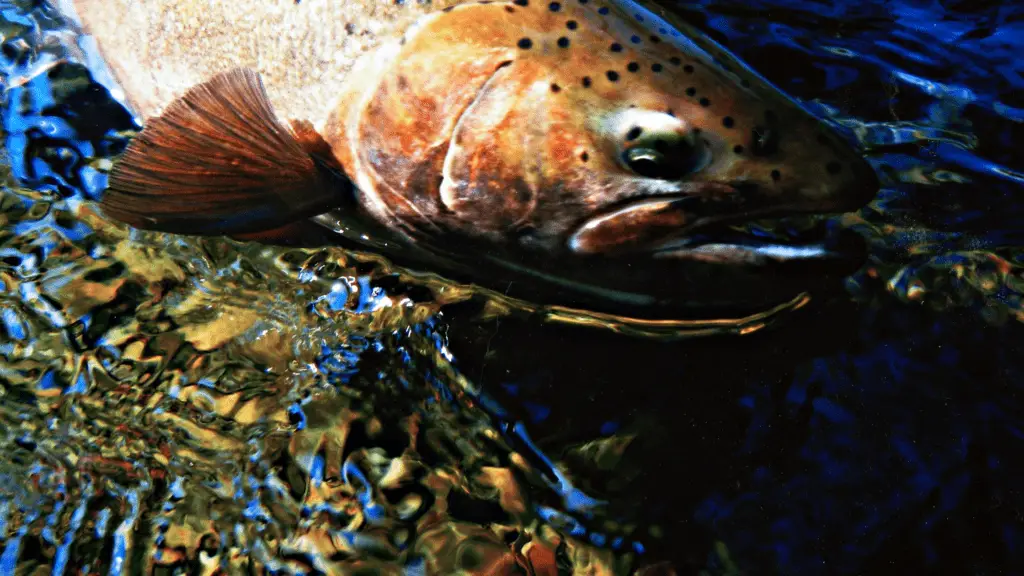
What is the steelhead limit in California?
As mentioned, the steelhead limit varies in each river and tributary every year. The limit is usually based on the number of spawning populations in a given area.
There are no cut-off times or season requirements. However, certain rivers and tributaries have mandatory limits. It is to help keep the population of the fish healthy. Some states don’t have limits on their rivers, while others are significantly lower them.
For instance, in Klamath River and Trinity River, you can only possess four hatchery steelhead. Lower Sacramento River allows only one hatchery steelhead. Meanwhile, the Nacimiento River, Noyo River, and Navarro River allow at least two hatchery steelhead. Other parts of the Sacramento River allow two hatchery steelhead, such as the Deschutes Road bridge to the Red Bluff Diversion Dam.
To find out your local steelhead limits, contact your local fisheries office. You can also visit this website for complete regulations updates.
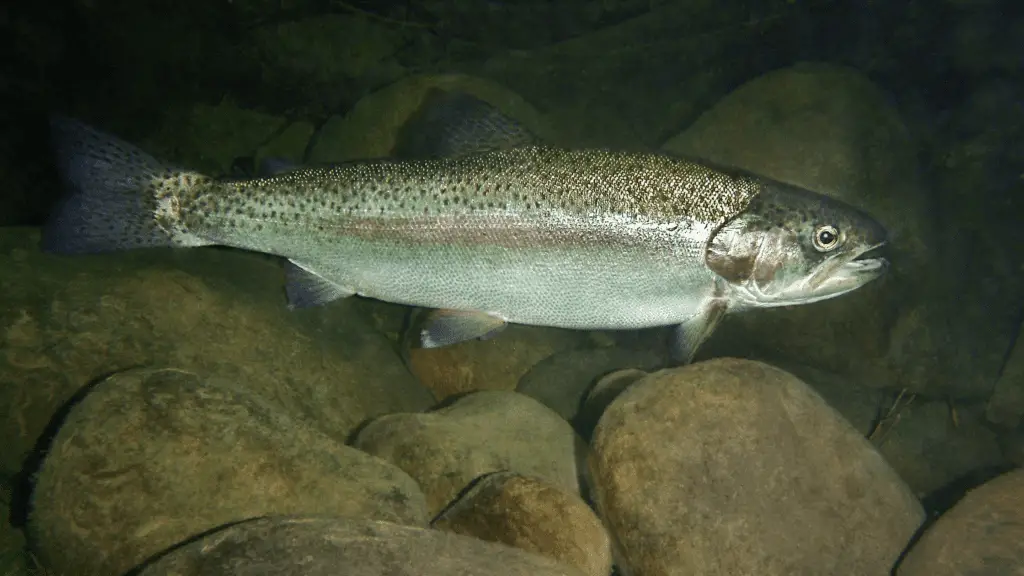
How much is a steelhead tag in California?
The licensing is done in two ways, depending on how long you need it for. Whether you’re a resident or not, one-day and two-day licenses cost the same. Nonetheless, annual permits are more expensive for out-of-staters. If you are a non-resident, you do have the option to purchase a 10-day license, though.
License type and its cost for residents:
- One-day license: $17.02
- Two-day license: $26.49
- Ten-day license: N/A
- Annual license: $52.66
License type and its cost for non-residents:
- One-day license: $17.02
- Two-day license: $26.49
- Ten-day license: $52.66
- Annual license: $142.05
If you’re looking to spend the rest of your life exploring these beautiful waters, you have another option. CA residents are eligible to buy a Lifetime Fishing License. Generally, it guarantees a new annual fishing license for as long as they want to keep doing it. You can only purchase these licenses at CDFW sales offices, and the cost varies depending on the angler’s age.
License type and its cost:
- 0-9 Years Lifetime License: $579.25
- 10-39 Years Lifetime License: $946.75
- 40-61 Years Lifetime License: $853.00
- 62+ Years Lifetime License: $579.55
Avid sport anglers can purchase a Fishing Privilege Package for $380.25 (price subject to change). It includes a stamp that’s valid for your whole life. Additionally, it also consists of a North Coast Salmon Report Card and Steelhead Report Card. This privilege will help in your search for the next big fish.
Discounted Fishing Licenses
Are you a veteran, a low-income senior, or someone with a developmentally disabled child or spouse? You may be able to purchase a discounted license usually sold for around $8.
To apply, you’ll need to submit a form and any necessary evidence, such as a letter from the Veteran’s Administration. It should state that you were honorably discharged and have a service-connected disability rating of 50% or greater.
Who needs a sportfishing license in California?
You need to purchase a California fishing license if you’re 16 or older, fishing in either freshwater or saltwater. It also applies to all state residents, non-residents, and even if you’re with a fishing guide or on a for-hire charter boat. The state has made exceptions for certain situations, so be sure to follow the law.
You don’t need a license during free fishing days and if you’re going to fish in public piers. Anglers 16 below don’t need a license. However, they should possess a report card for some species.
Where to purchase a California Fishing license?
California Department of Fish and Wildlife, a California state agency, sells sportfishing licenses online or their license sales offices. You can also buy them from Walmart, Big 5 Sporting Goods, local tackle shops, and other licensed retailers. CDFW offices don’t accept cash payments, though.
Additional Requirements
Report Cards
Steelhead fishing in California is restricted to anglers who have the appropriate report cards. The steelhead report card usually costs $8.13. Remember that your report card is due by January 31 of the following year. You can input it online or mail it to the address on the card.
Ocean Enhancement Validation
Ocean waters from south of Point Arguello in Santa Barbara require an Ocean Enhancement Validation costs $5.97. This also includes one-day and two-day sportfishing licenses.
Second Rod Validation
Anglers will find that the Second Rod Validation ($16.46) is a must-have in their tackle box. It allows them to use two rods and lines in inland water. However, it doesn’t apply to special waters when anglers can only use barbless hooks and artificial lures.
Final Thoughts
Steelheads are an important part of the California ecosystem. They provide a food source, and they also play a role in spawning and rearing other species. However, these fish populations are declining due to habitat destruction and human-caused changes to water flows. We must find ways to protect these fishes before it’s too late.
Fishing is a great way to enjoy nature with the company of friends and family. It’s also the most rewarding hobby in terms of its cost-to-benefit ratio. However, when you’re out on the water, it’s important to obey local regulations.
A reminder that every minute you spend fishing is a donation to the spirit of conservation. Therefore, act with respect for nature, for yourself, and everyone else.

